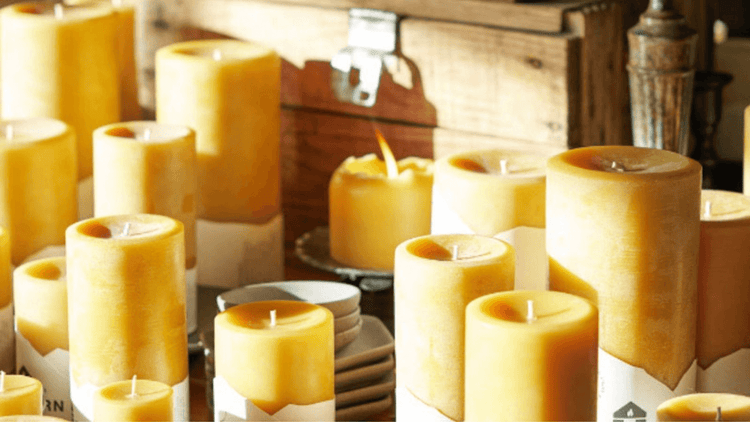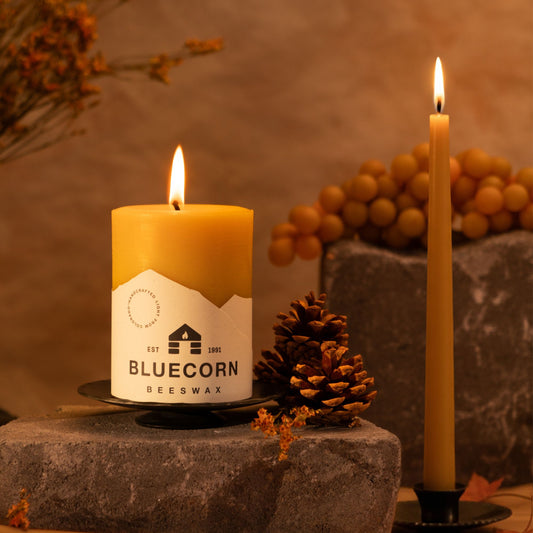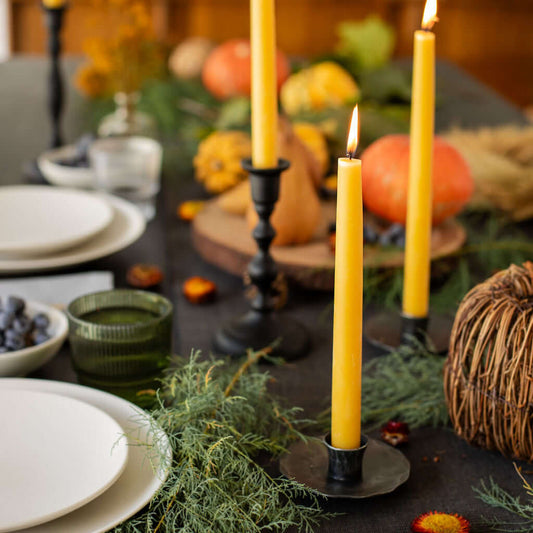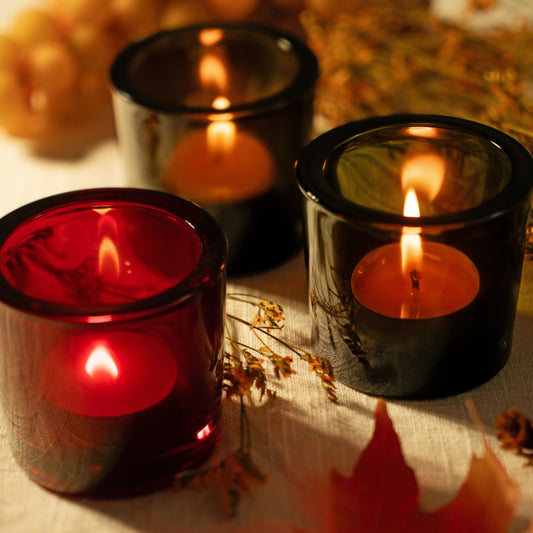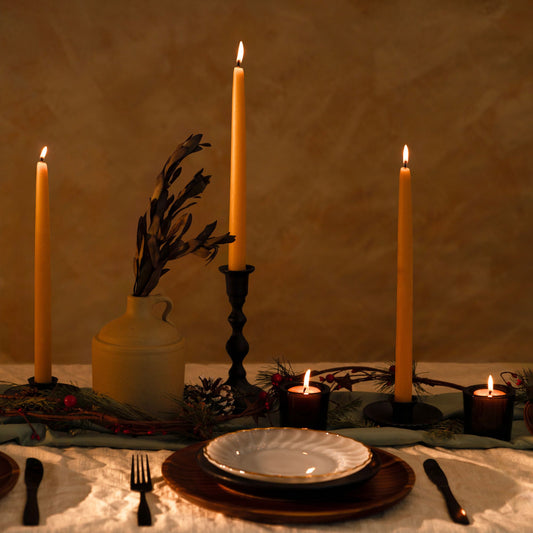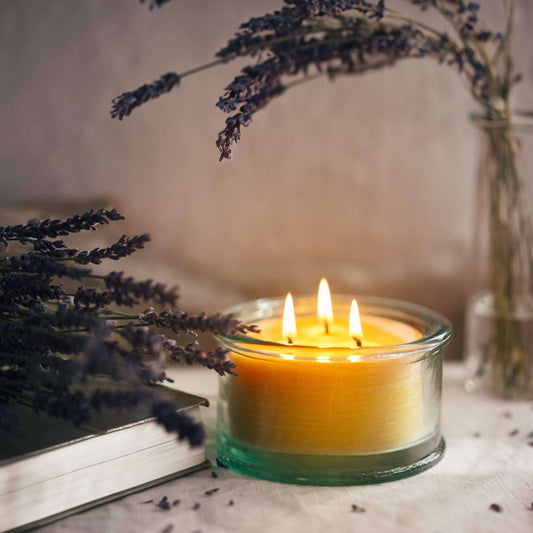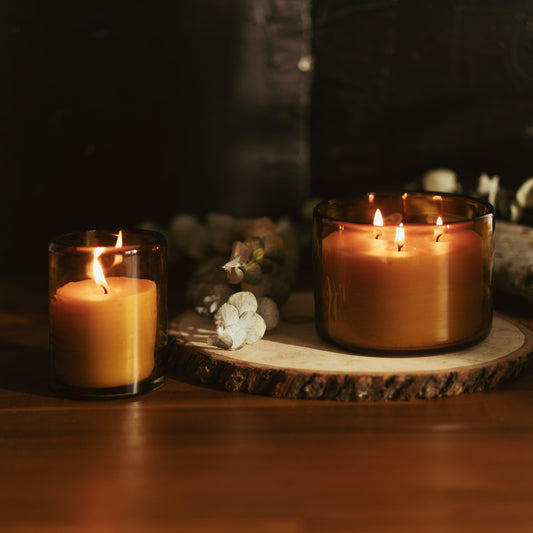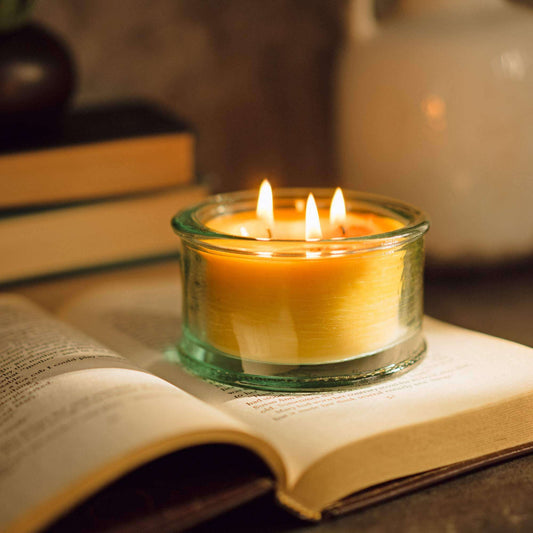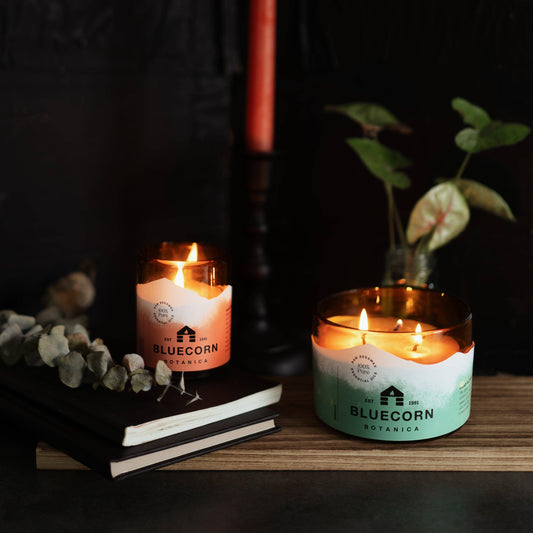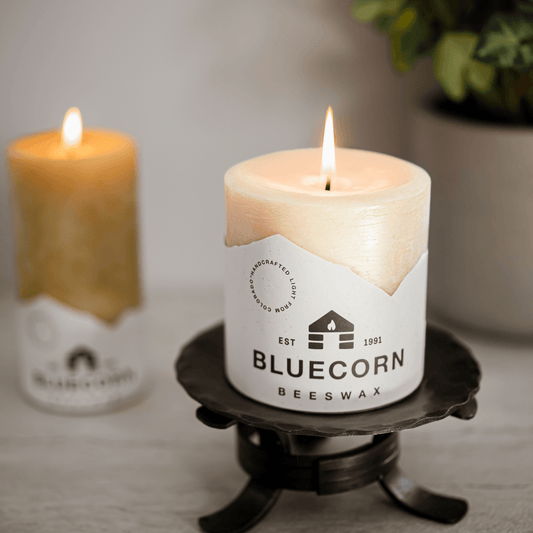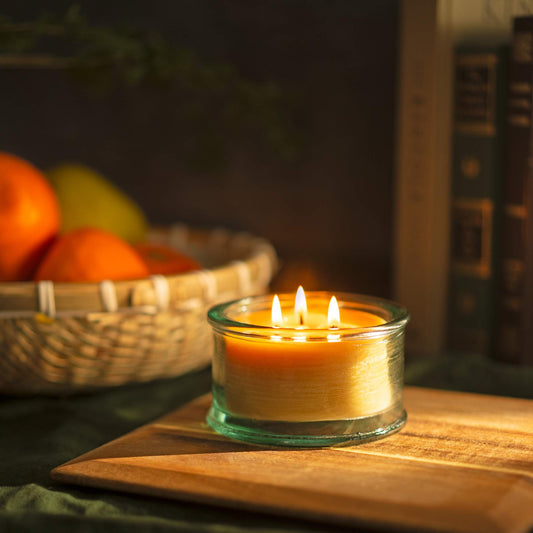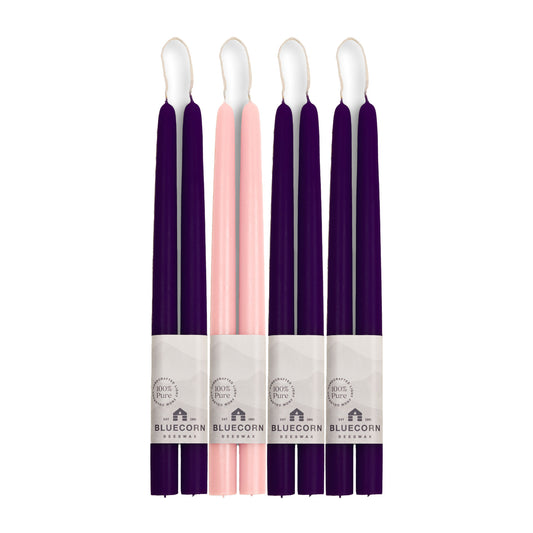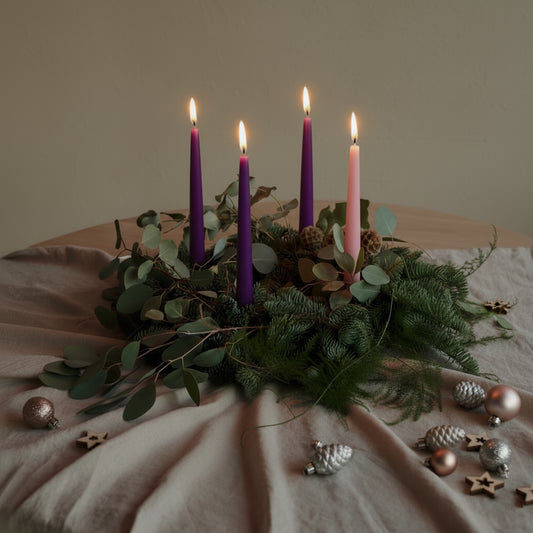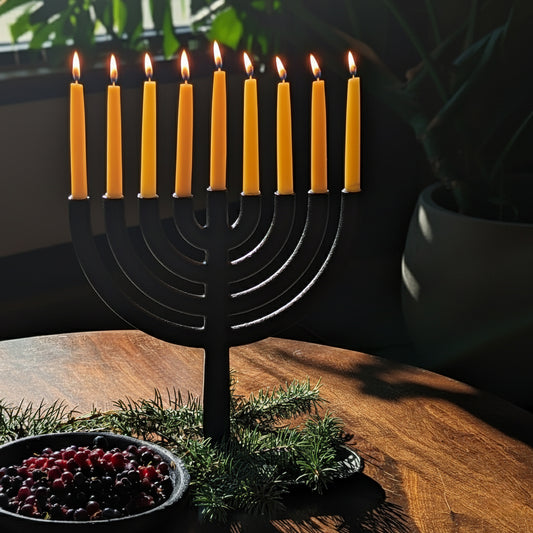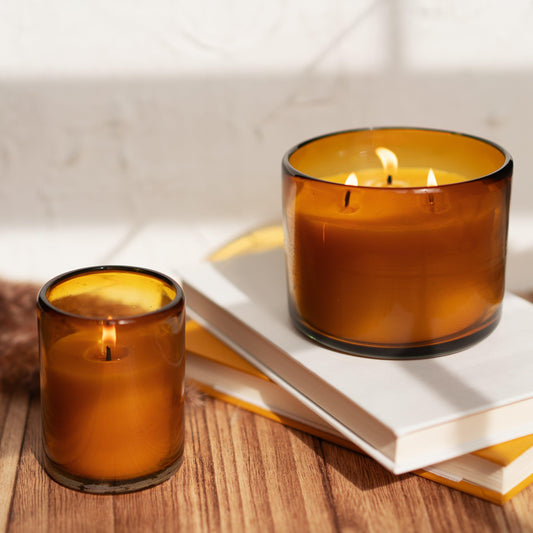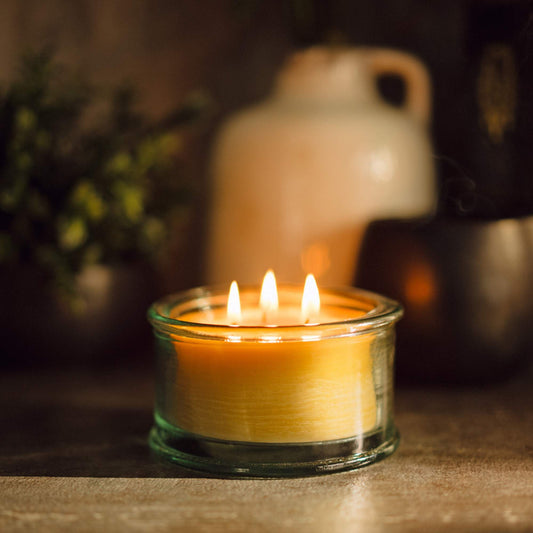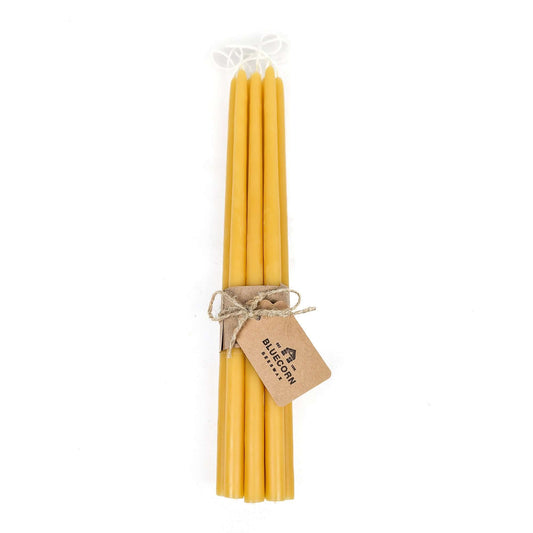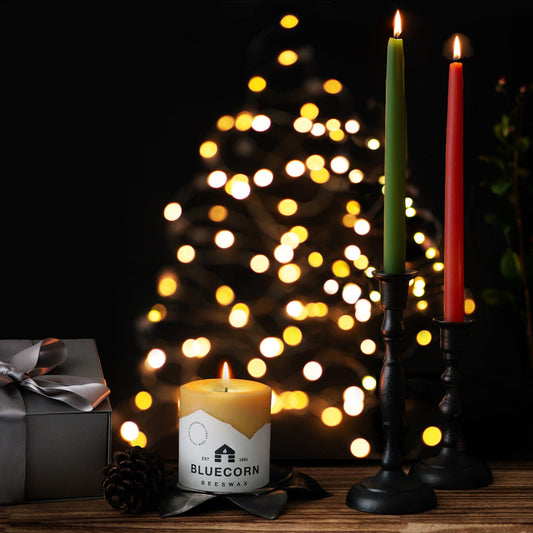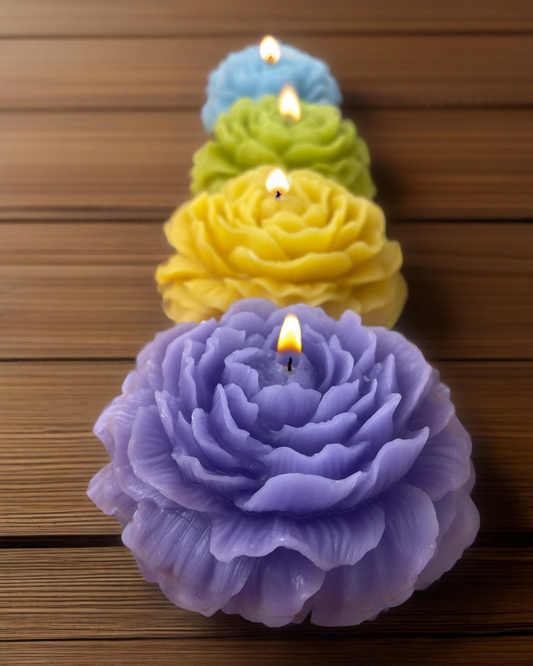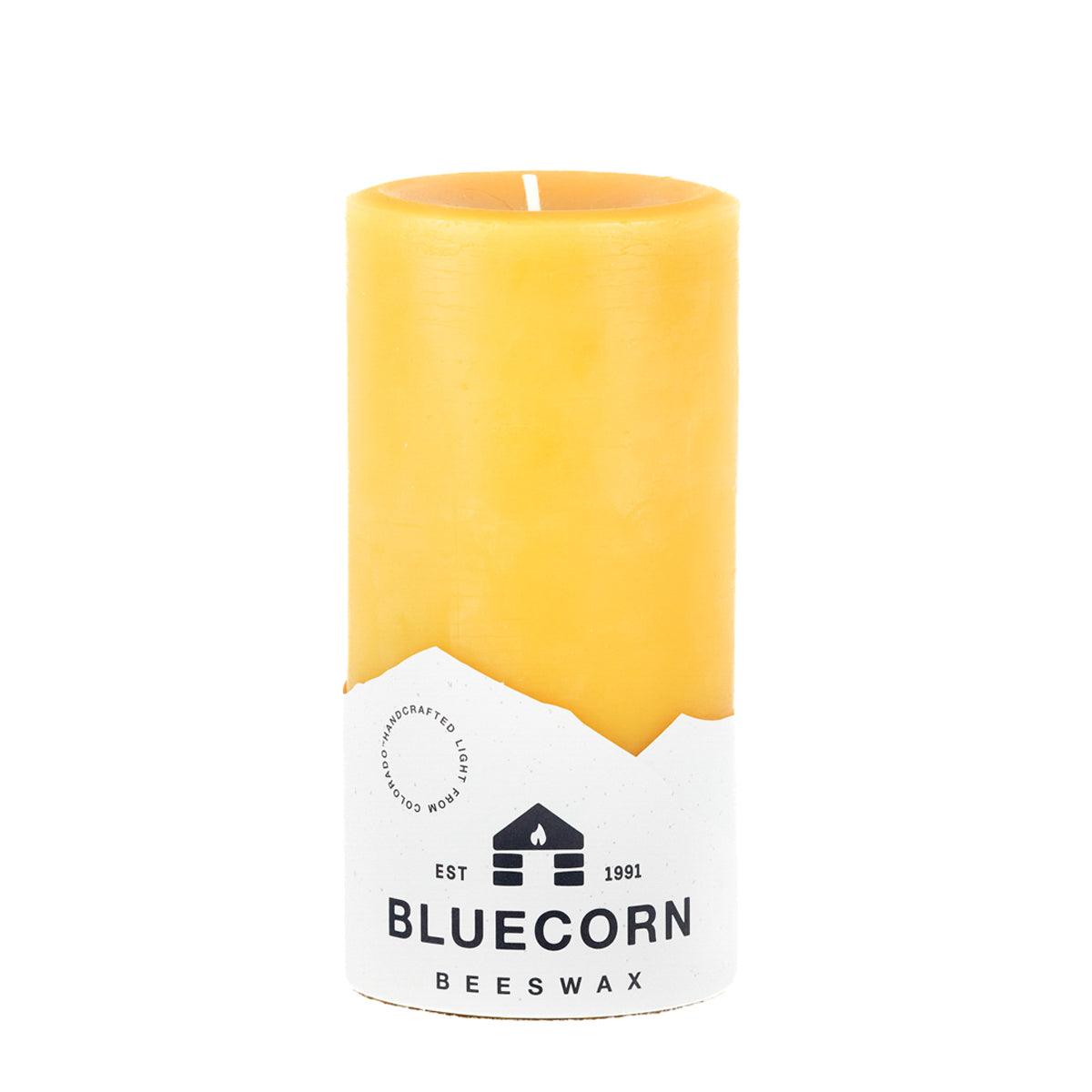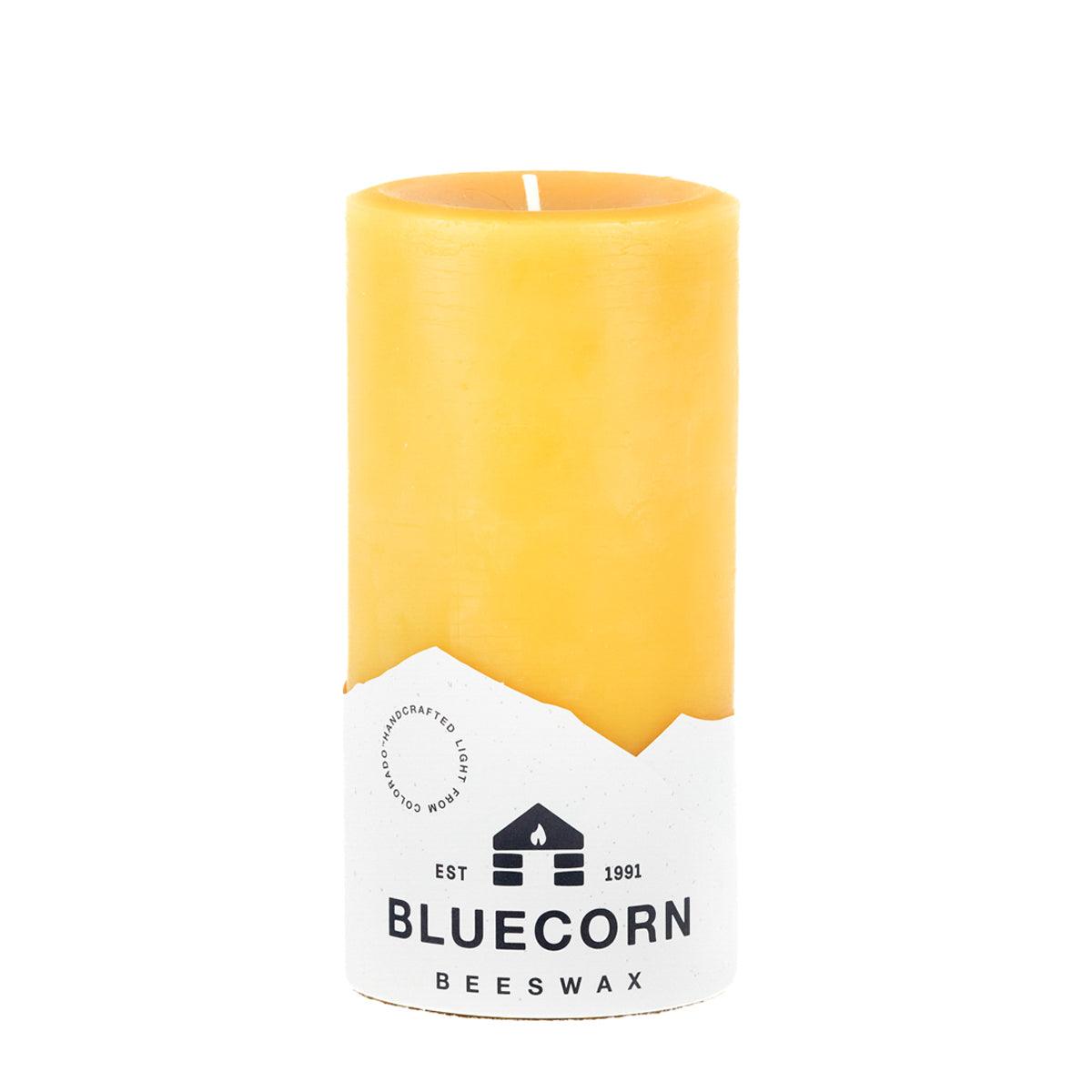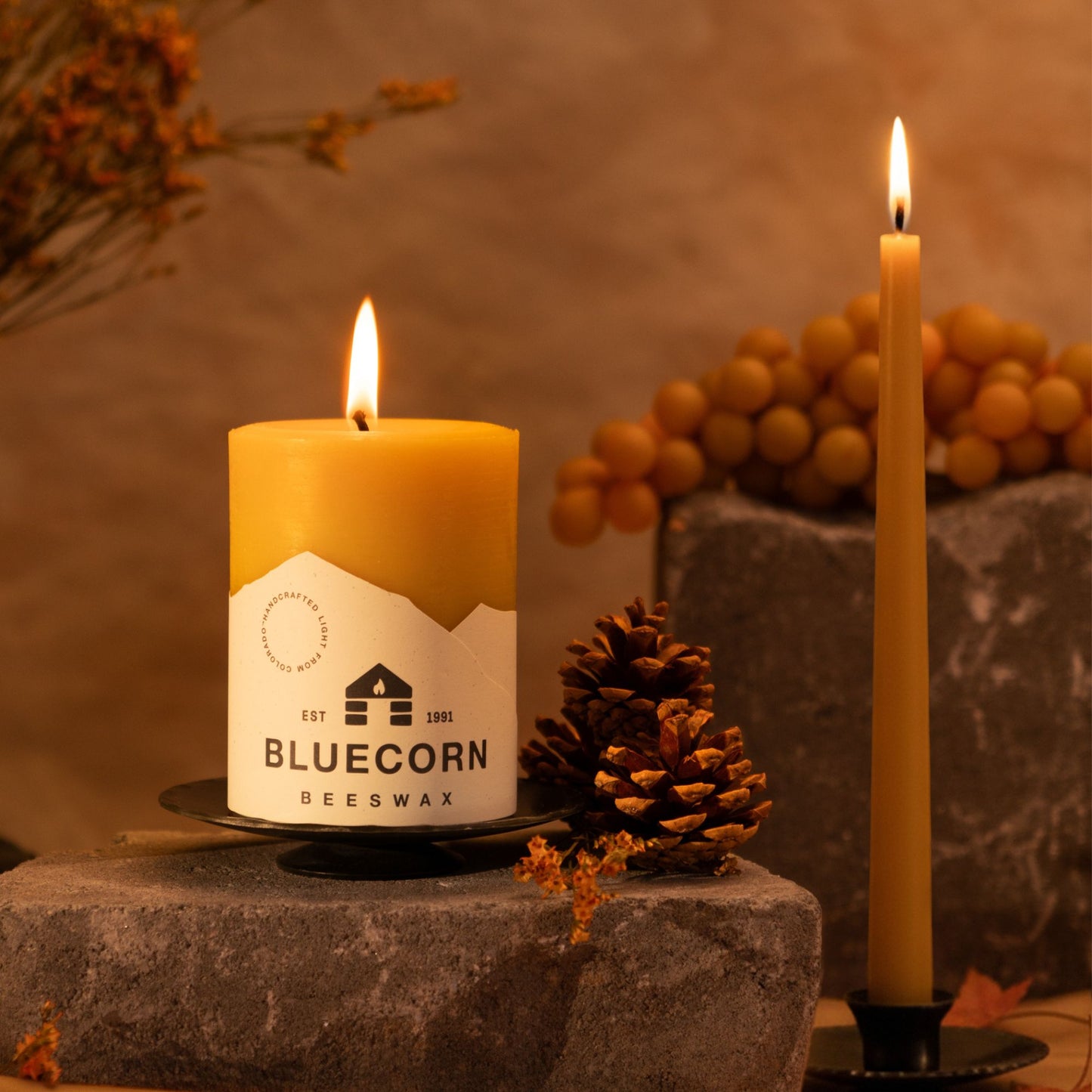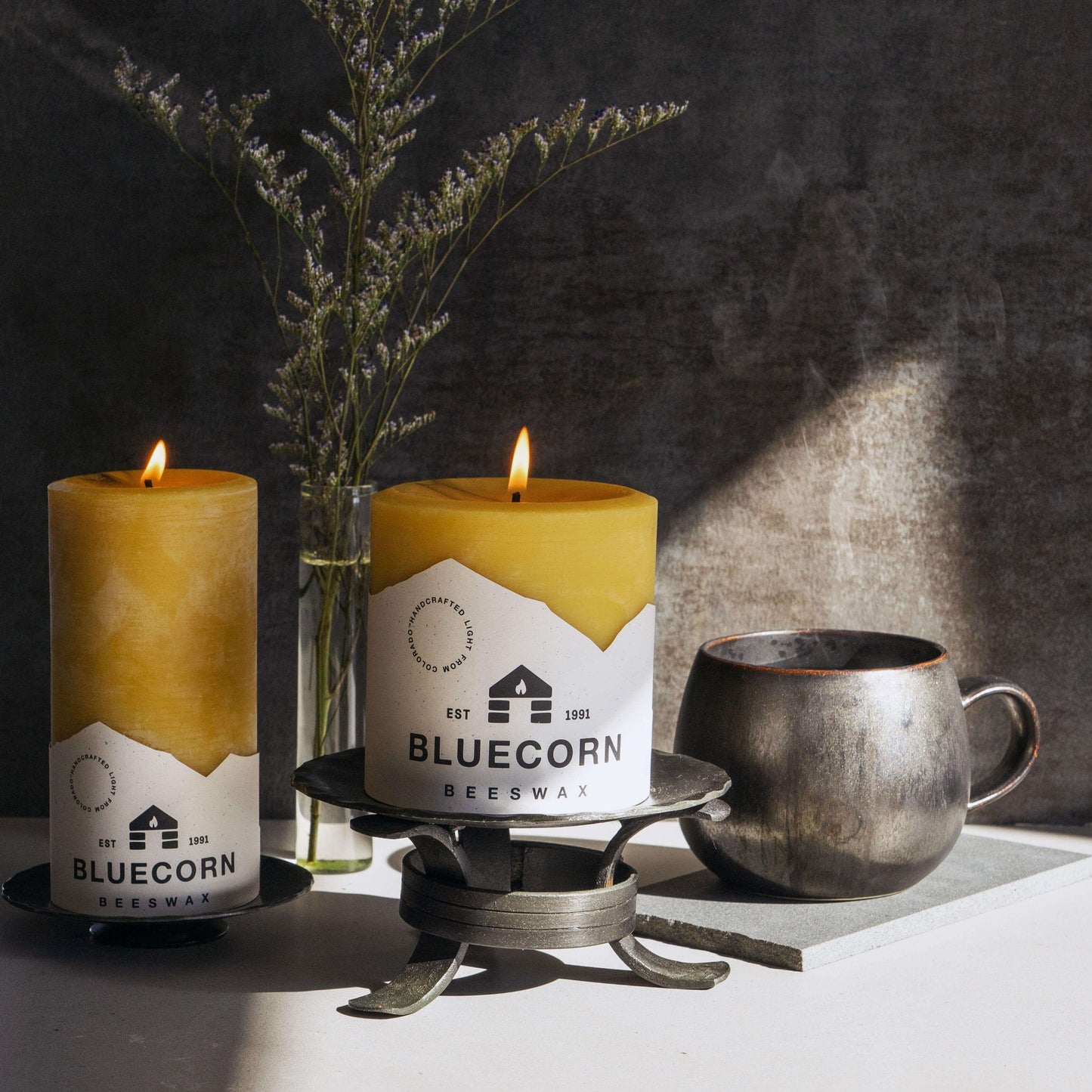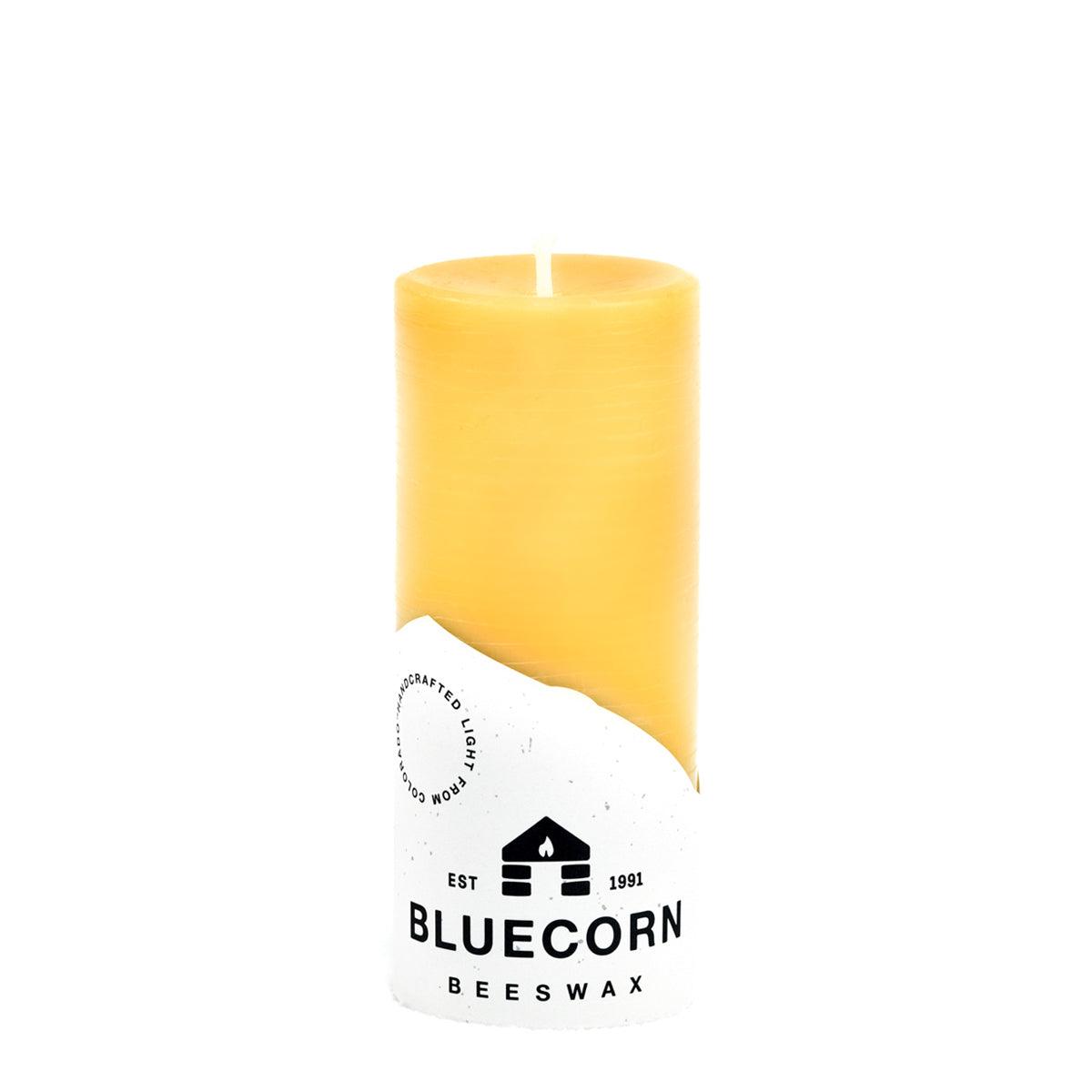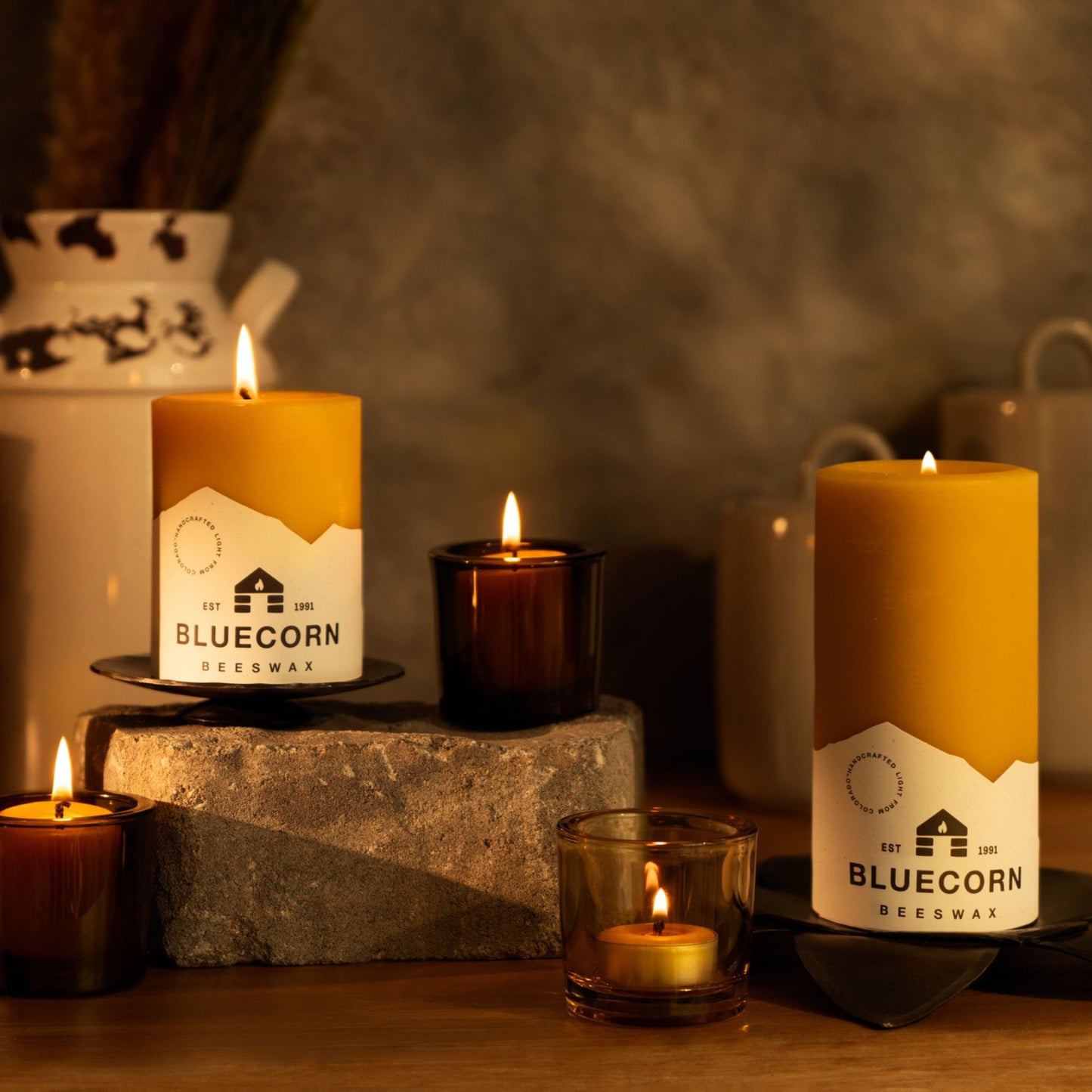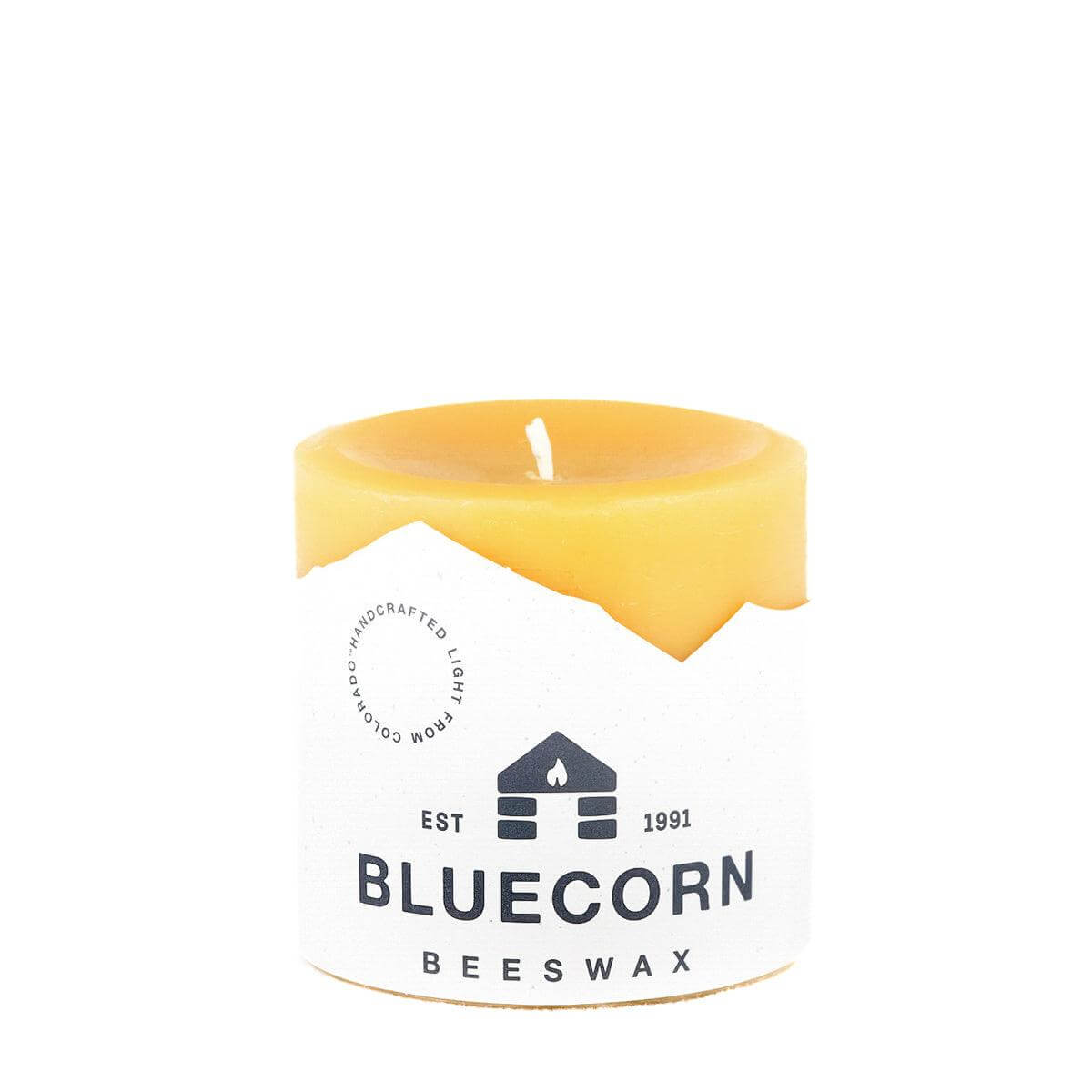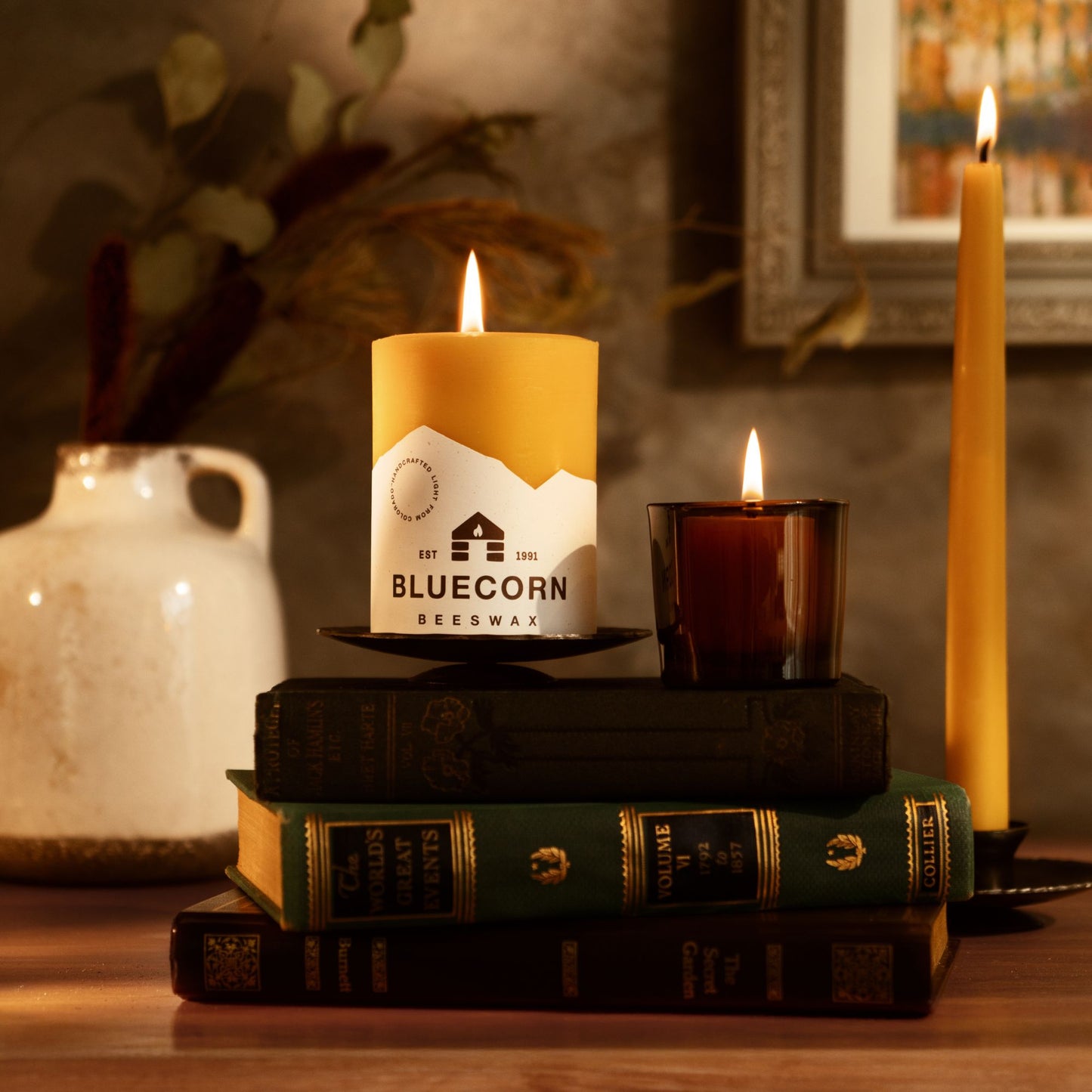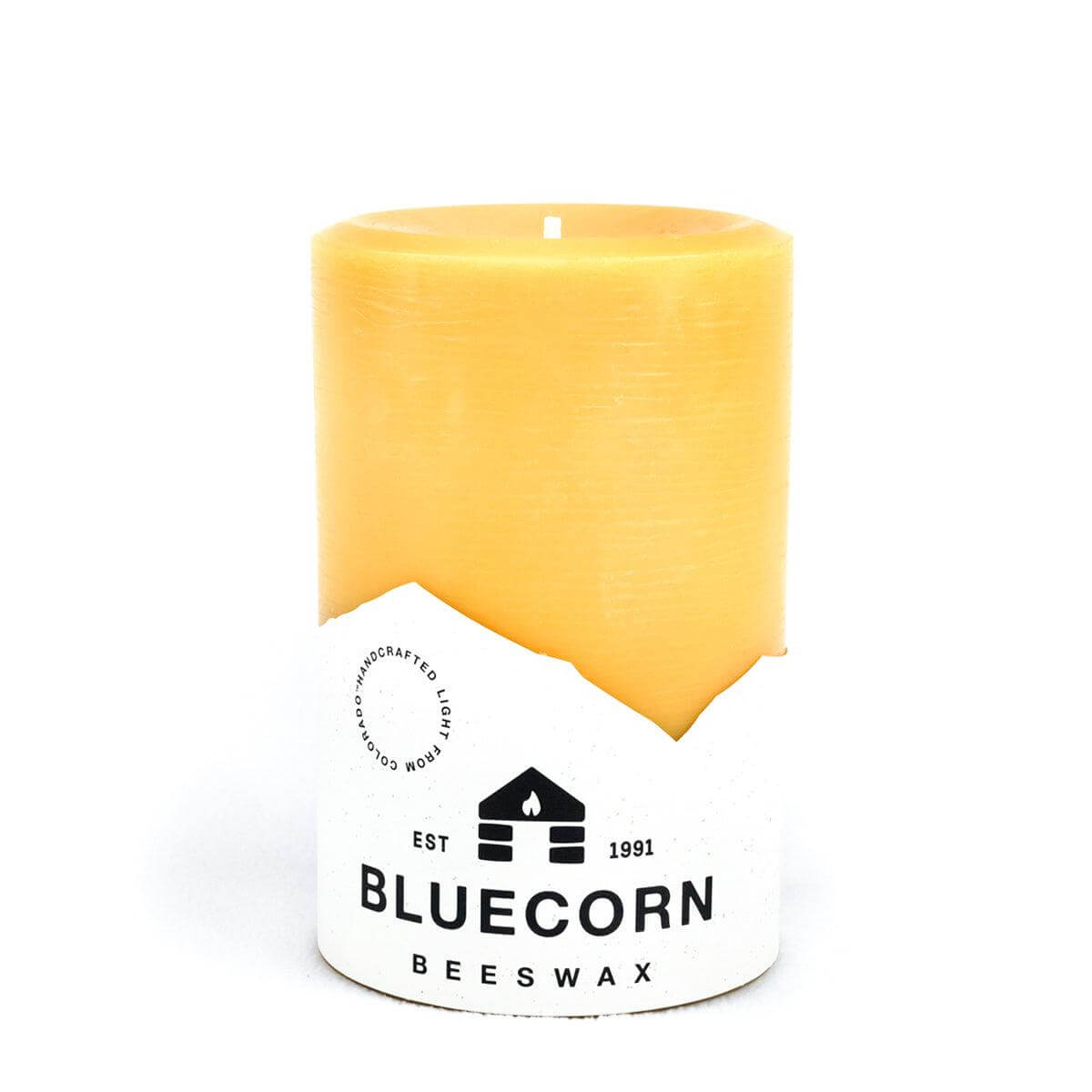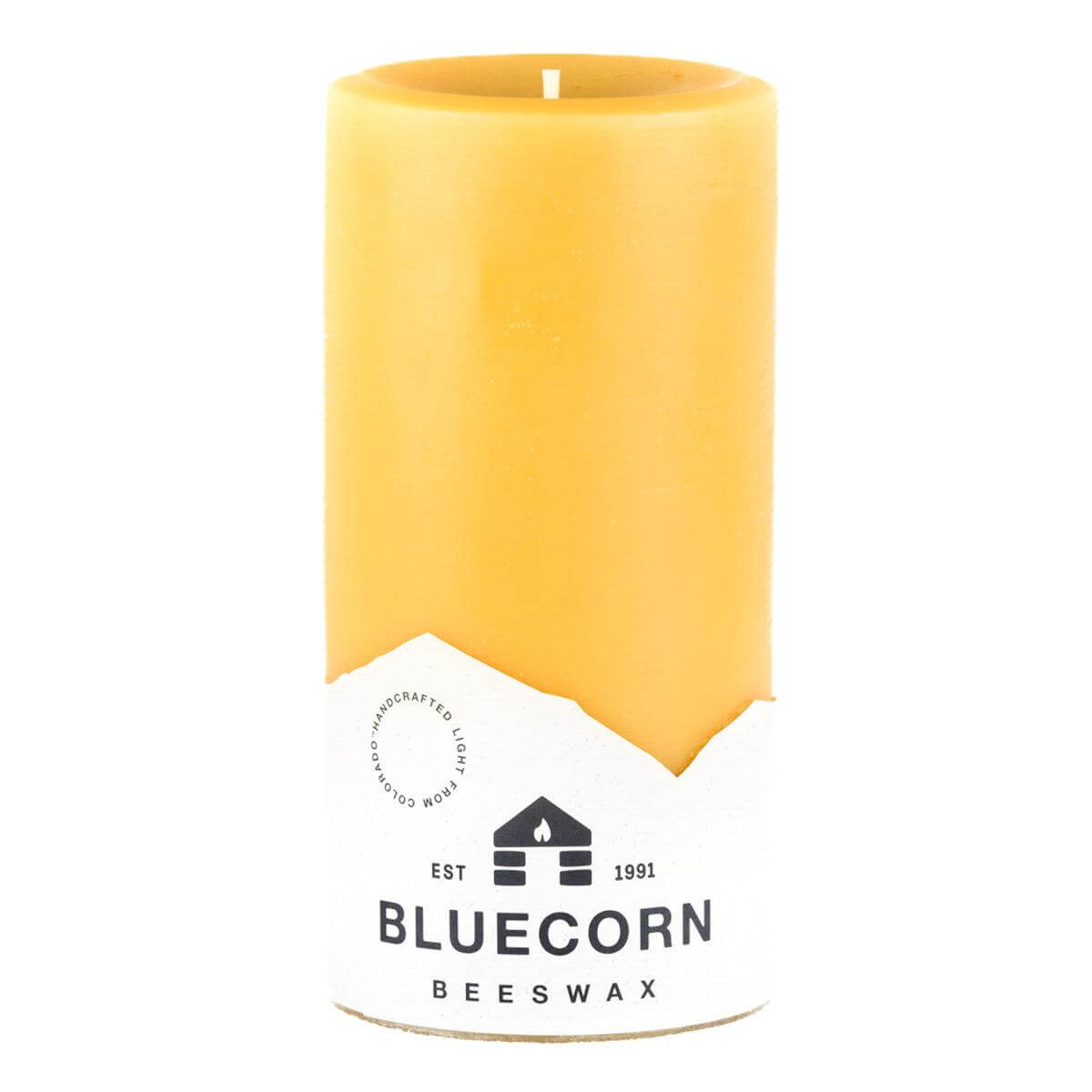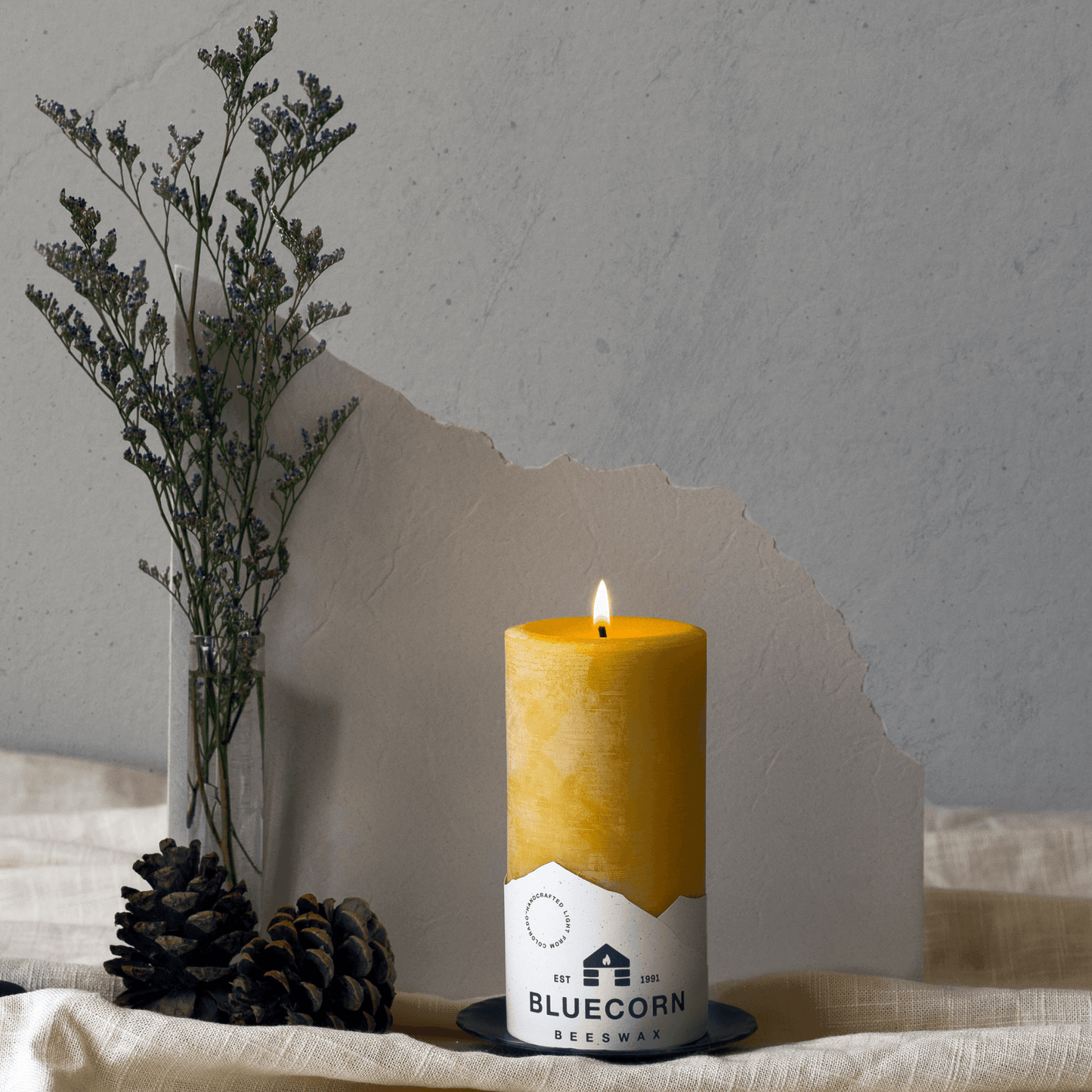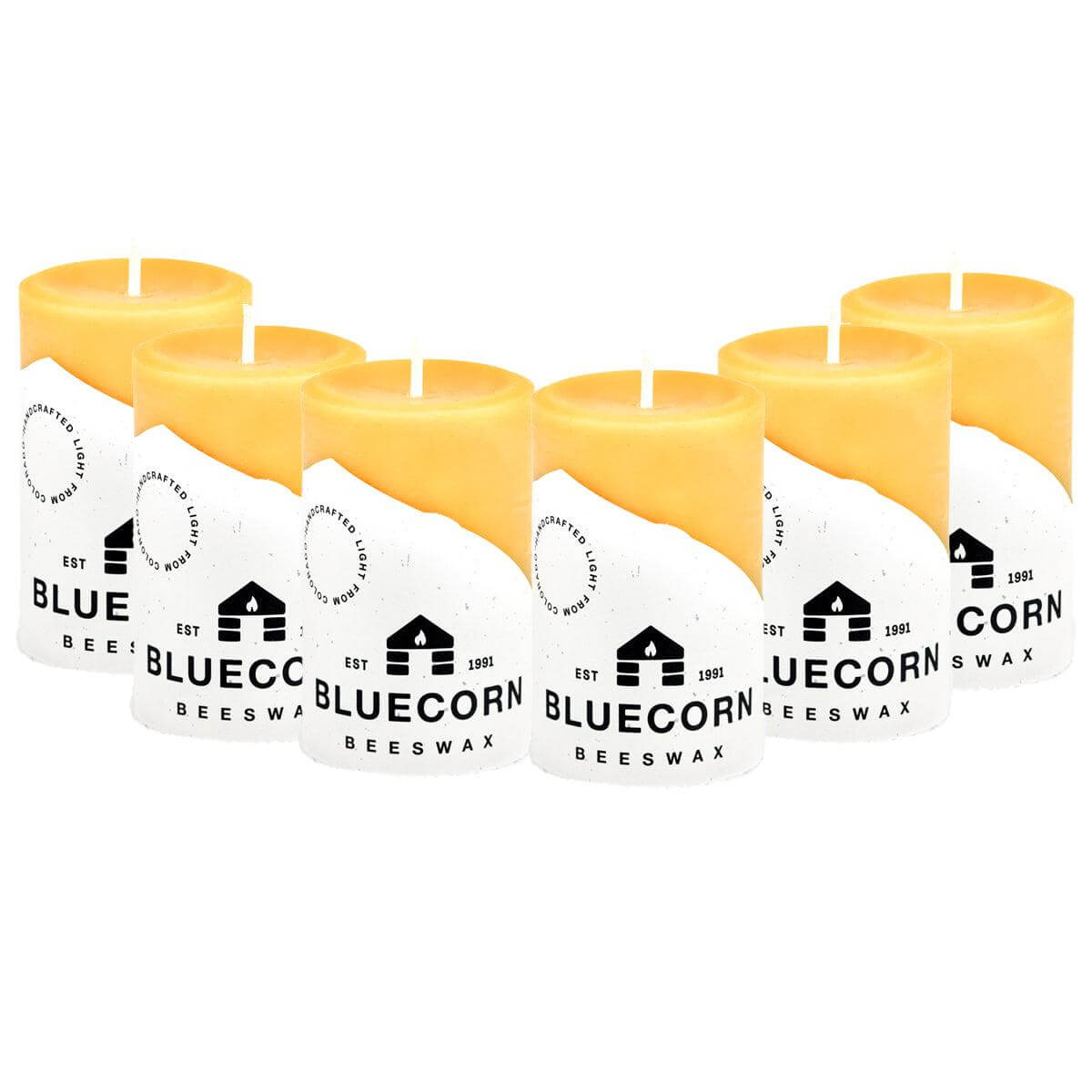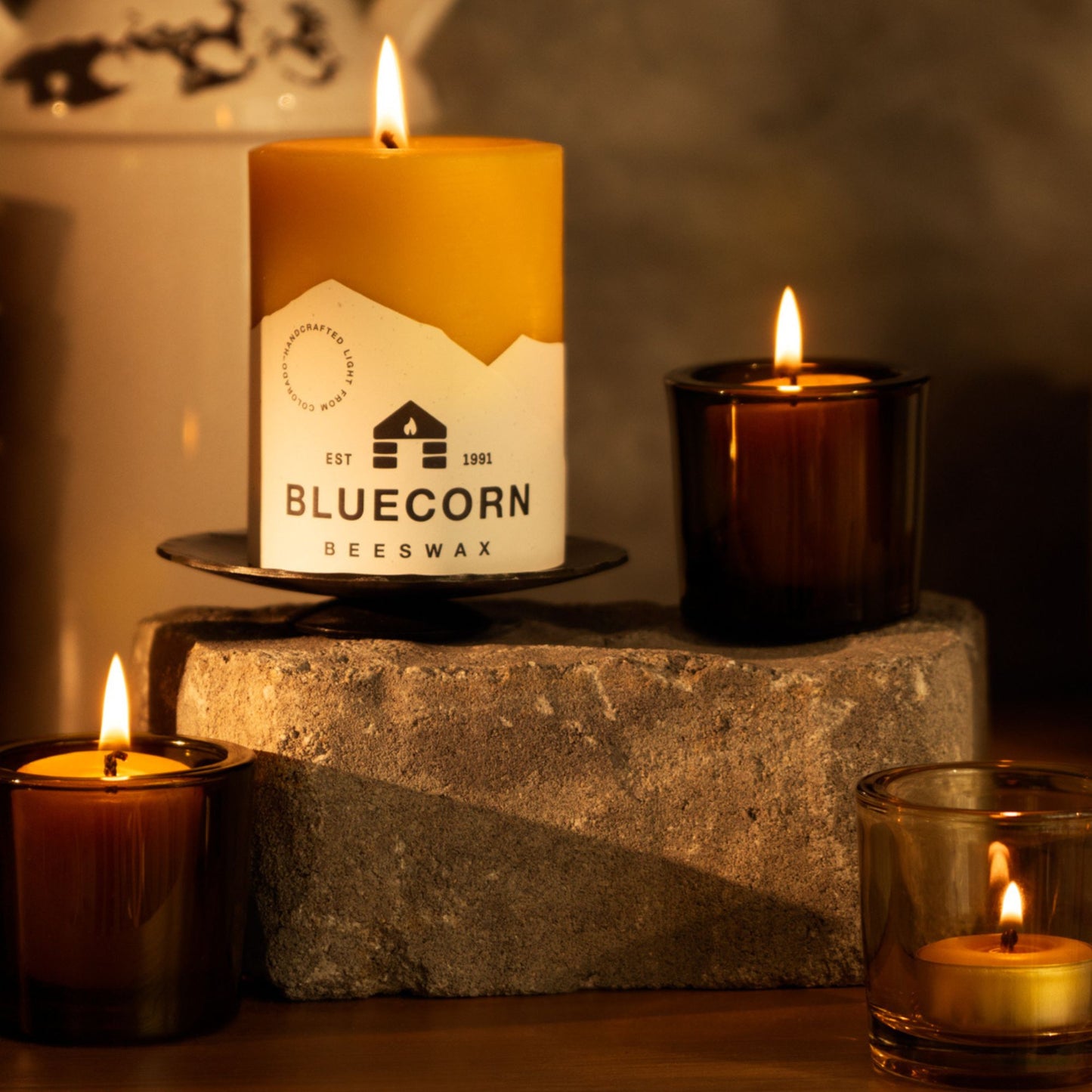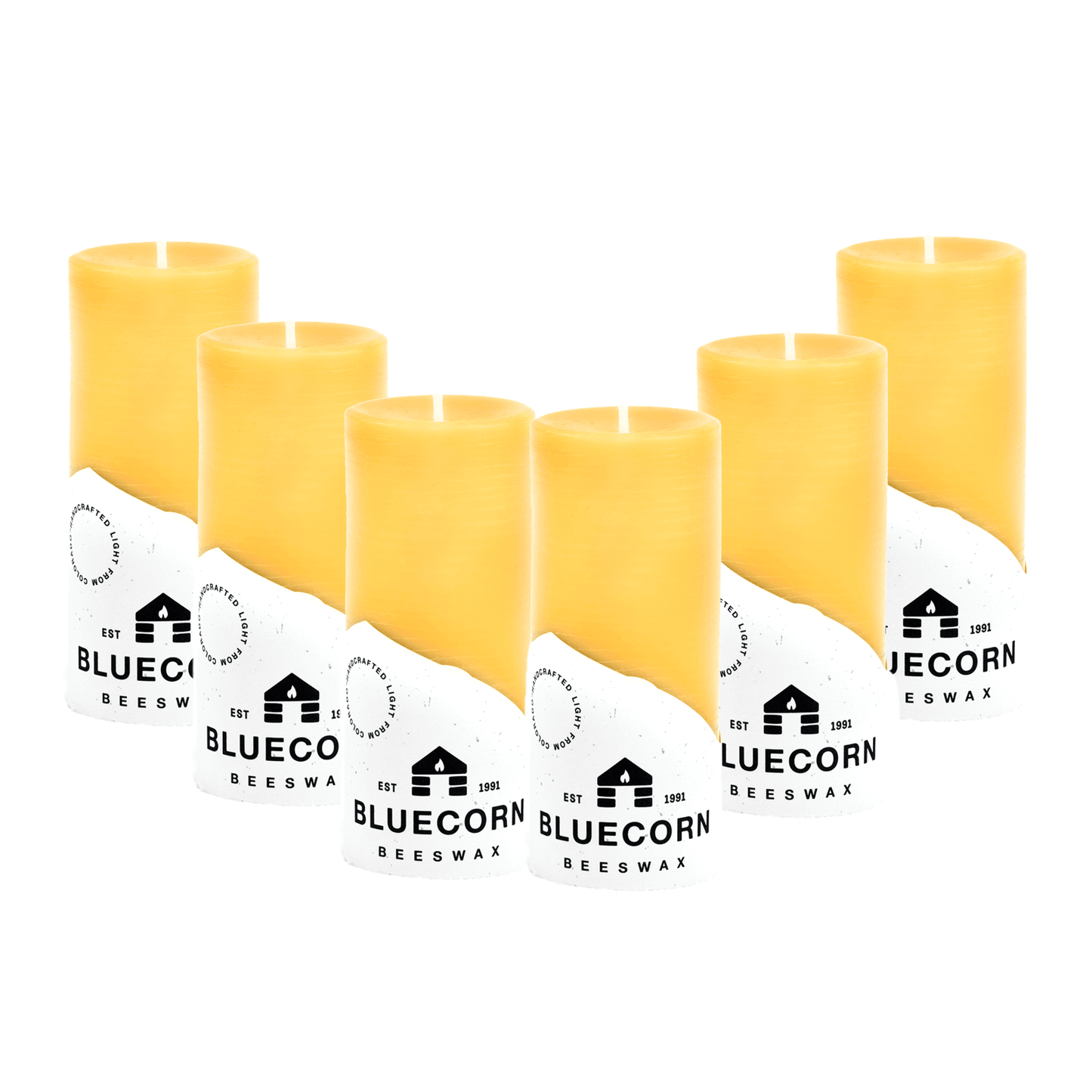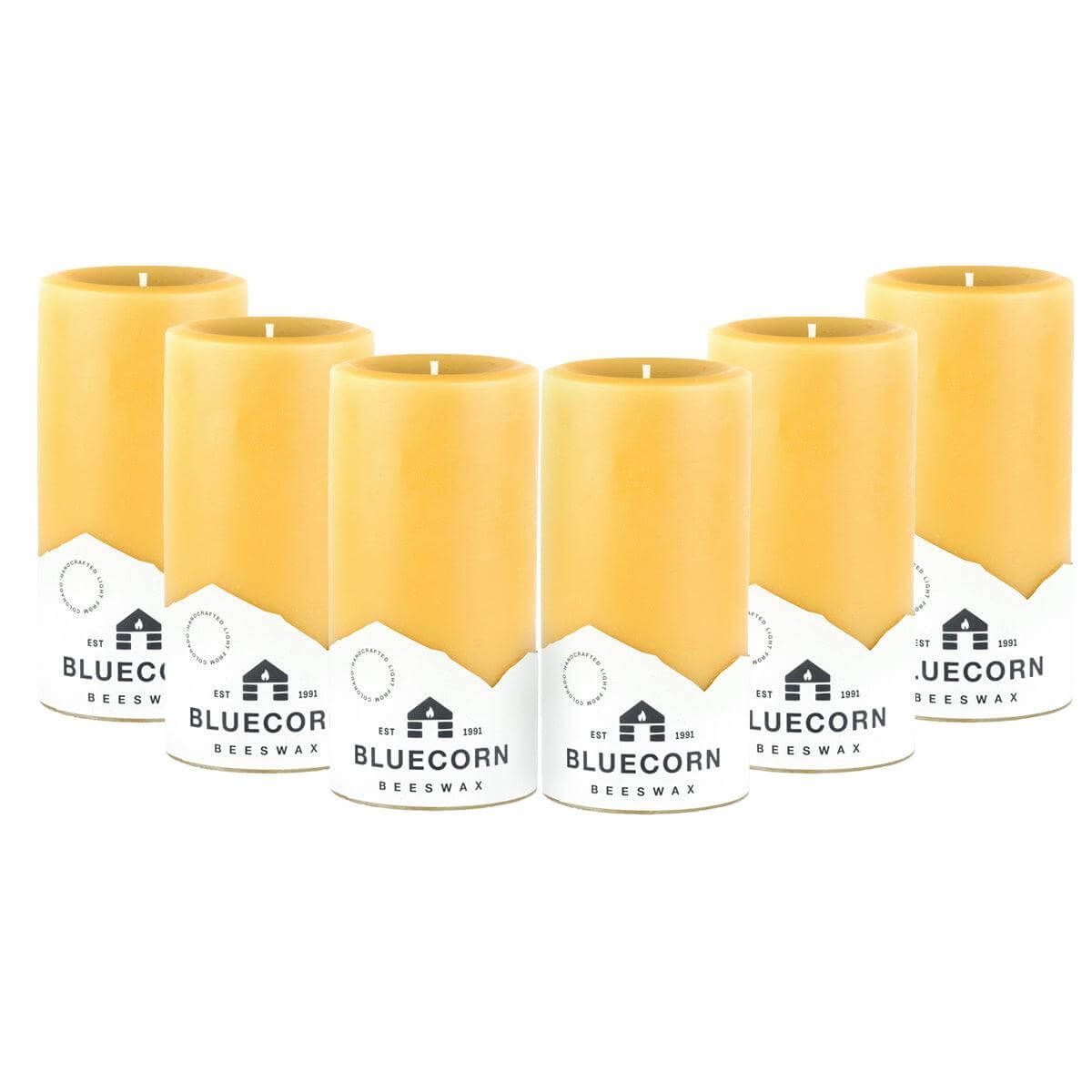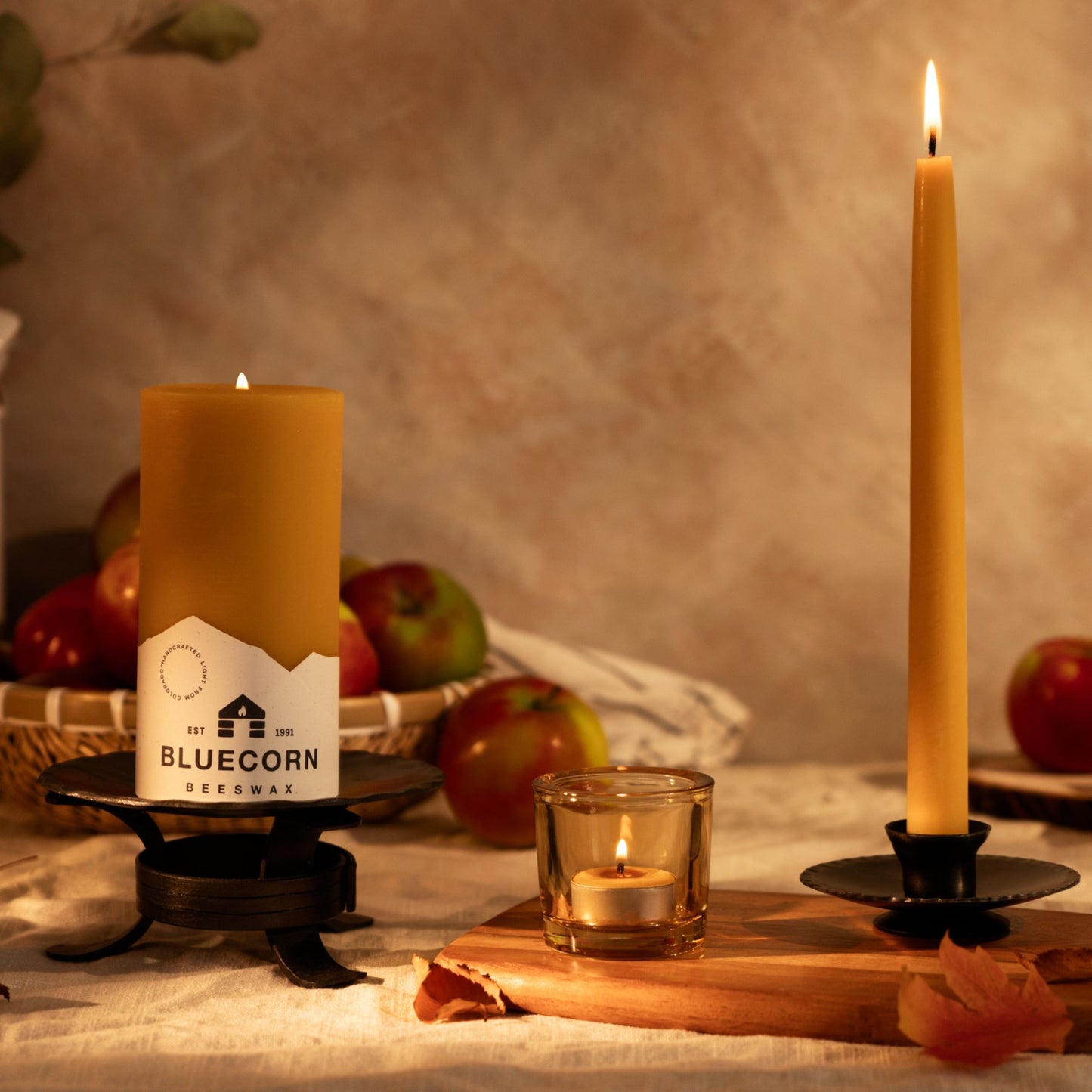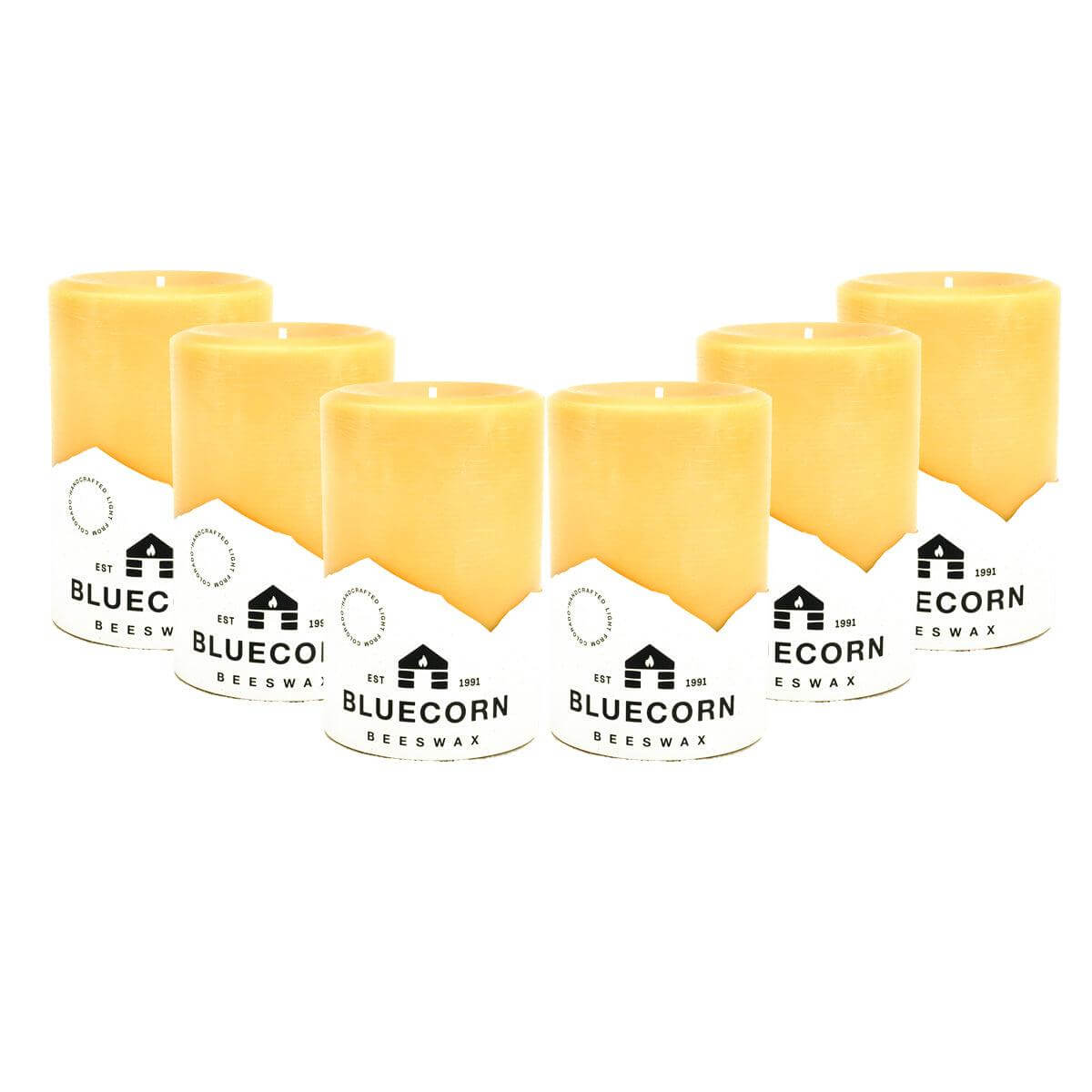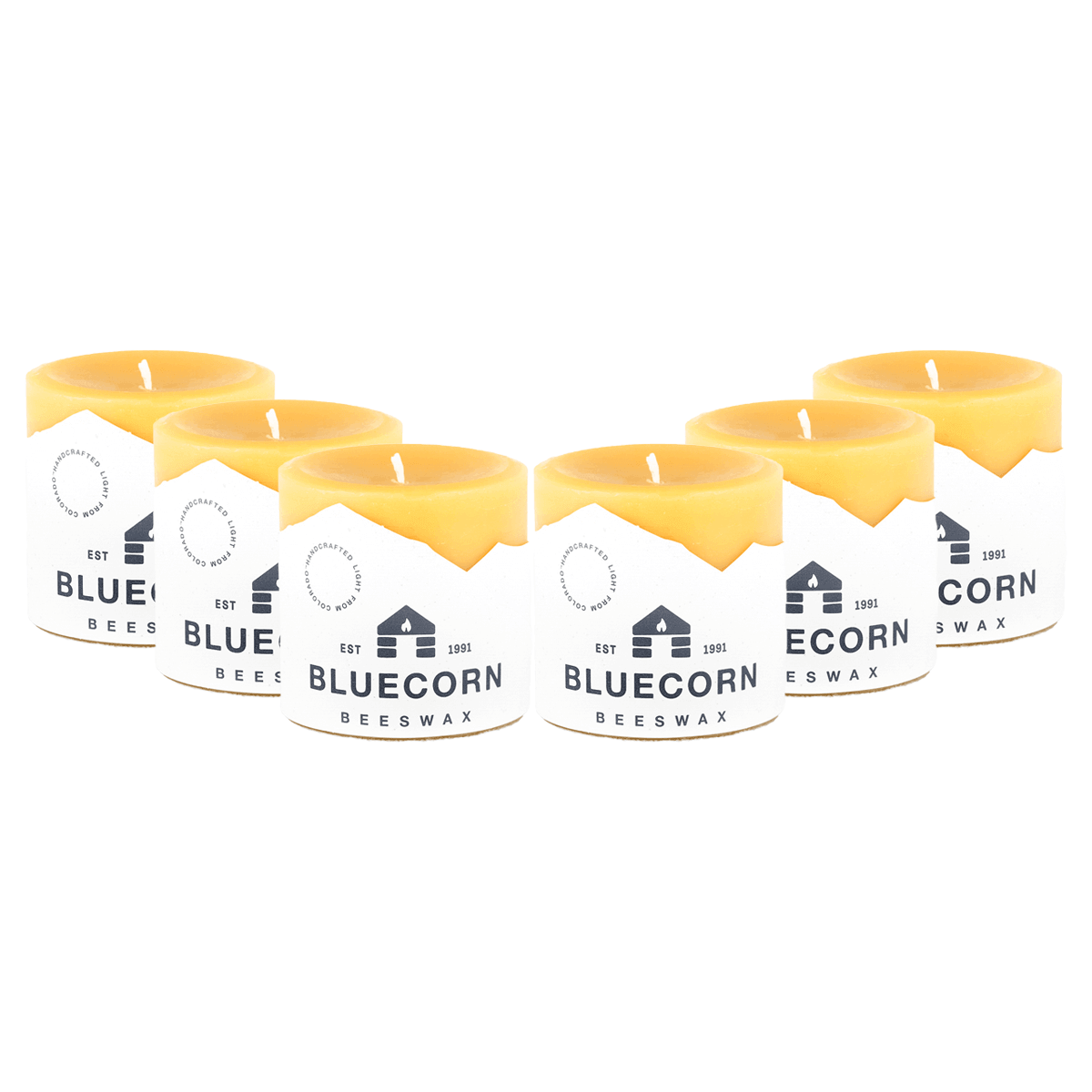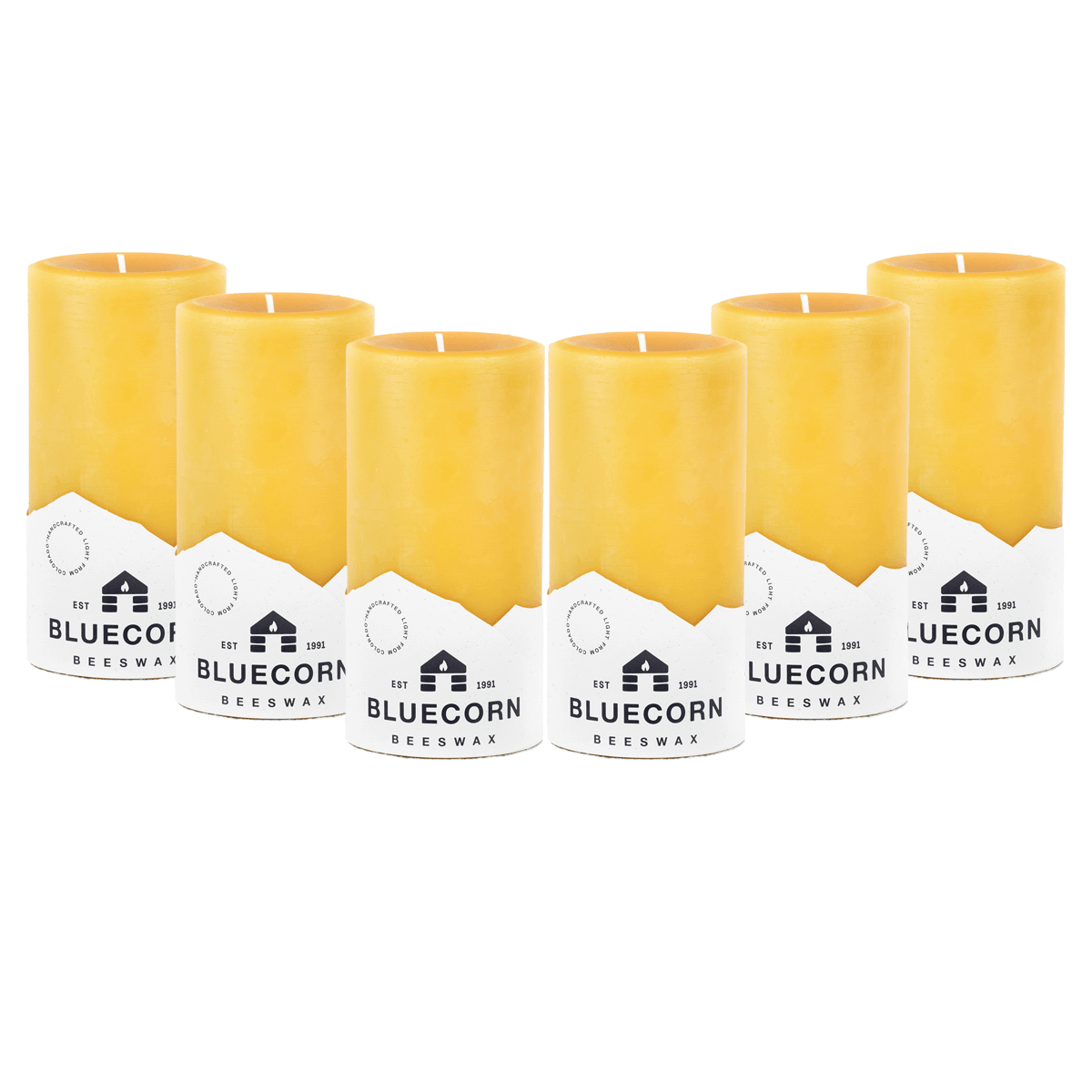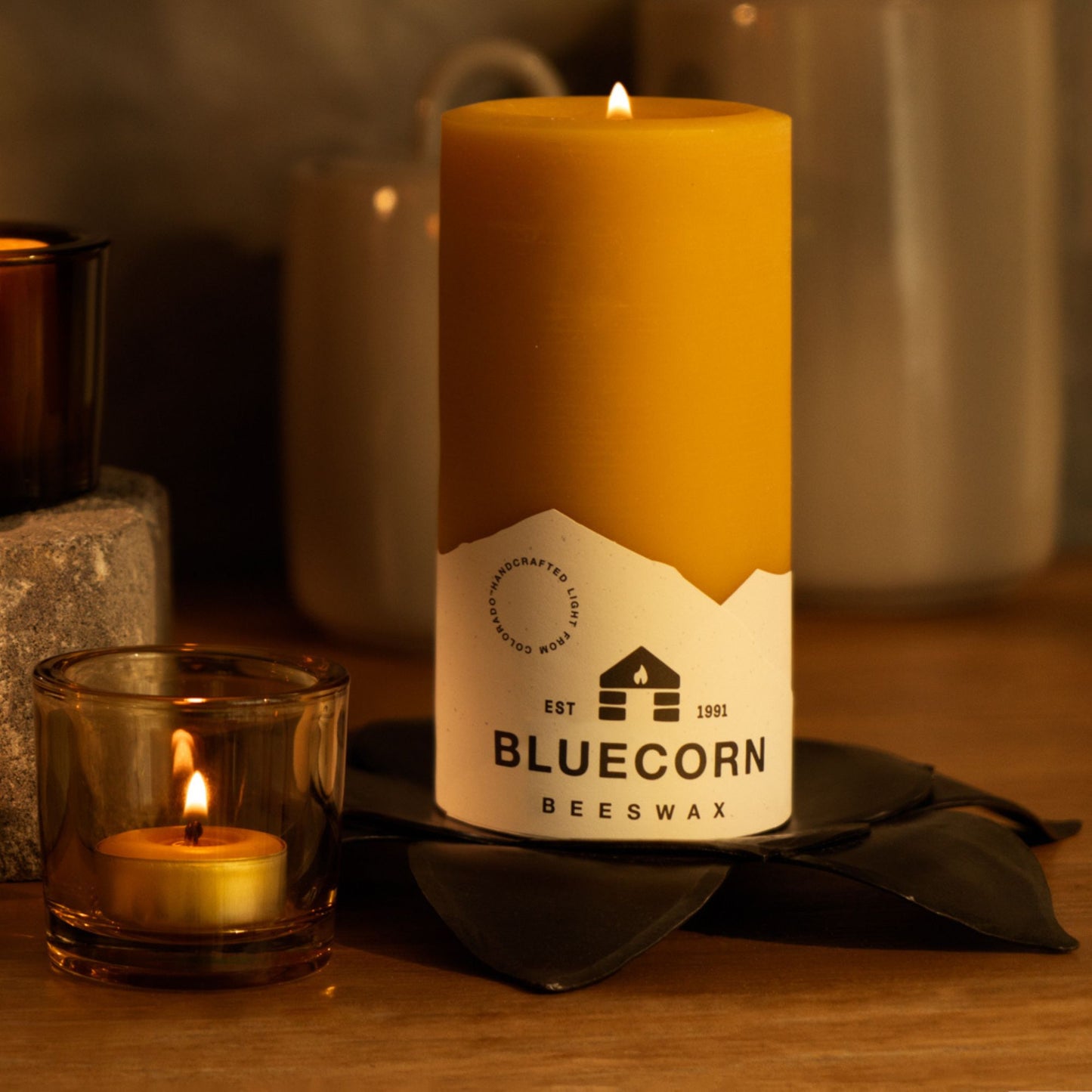Pure beeswax candles require particular care depending on their shape and size.
Trim the wick to 1/4" before lighting. Wick trimming prevents overly-large flames that can smoke and shorten your burn time.
Key caveat: Trim taper wicks to 1/4" to separate the pair, but after that you should leave them long. Tapers need their longer wick to balance their very narrow and delicate burn pool. If you trim to short, you're likely to get dripping.
Let the molten wax reach the container wall before extinguishing your candle. This goes for everything you burn in a vessel, from beeswax in blown glass, to votives in holders, to scented candle tins, etc. If you extinguish before the melted wax covers the surface of a container candle, you'll mess up the burn equation going forward. That basically means the next time you burn your candle, there will be too much wax for the amount of wick, which can lead to tunneling and even wick failure.
Choose the right diameter candle for your burn style and timeline. The wider the candle, the longer it needs to burn every time you light it in order to perform its best. In beeswax land, the rule of thumb is usually one hour per inch.
So, if you get a 3" diameter pillar, it needs to be burned for at least 3 hours at a time to avoid tunneling and maximize the overall longevity of your candle. This is great if you're someone who enjoys burning candles all afternoon or evening.
For folks seeking shorter candle burning sessions of an hour or less, we recommend narrower varieties like pure beeswax tea lights and votives. Because of their unique shape, tapered candles have wildly flexible burn times. You can light one for five minutes or five hours — how's that for technological innovation!

